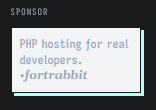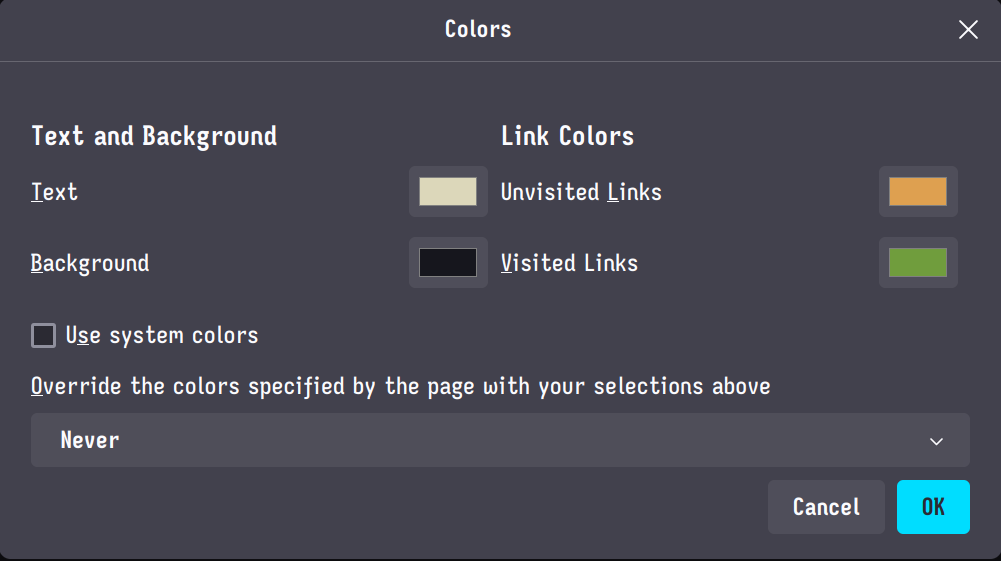

Congrats on all the labor you saved.
If you think folks here are uniquely unreasonable you could try lemmy.world/c/selfhosted .


Congrats on all the labor you saved.
If you think folks here are uniquely unreasonable you could try lemmy.world/c/selfhosted .


On the off chance that you truly don’t understand:
The nice thing to do would be to accept the feedback and add a short description. It’s confusing to others why you are staunchly opposed to performing that small courtesy, and instead jump to never posting here again.
Well FWIW CodeWars has plenty of Factor katas, and I try to gather related resources at https://programming.dev/c/concatenative
I’m trying to keep up with the Perl Weekly Challenges, but with Factor, and am posting some Factor solutions to Exercism’s 48in24 series.


I just grabbed it. The dash cam features might possibly be useful on a bike (?). But I tried and tried and couldn’t find the magic zoom level for it to show me the name of the street I’m on, got frustrated, and uninstalled.


I’m not off Google Maps either, but the closest to replacing it for me is Organic Maps, FWIW.


Thanks, I have, but it’s not a replacement for me. I’ll try it again once a year though.


Some combination of things like performance, non distracting presentation, the minimap, multi cursor that works how I like, some plugins I like, no web browser, the way every open buffer is always safe and saved in some cache without necessarily saving to the edited file, the UX for split view across tabs, minimal fuss to get UI text and colors legible for my bad eyesight, etc.


Sublime Text, Google Photos, Google Maps (partially)


Two books that may be helpful:
I’m more familiar with the former, and think it’s very good, but it may not give you the basic introduction to object oriented programming (classes and all that) you’re looking for; the latter should.


I’ve never had a Statamic site myself, didn’t know about it till this thread. I like site generators but don’t want to invest energy in ones that don’t handle colors very well. I don’t want to have to override colors, either as a user or developer, though I often do. For a an SSG anyway I want to be able to trust the tool to handle legibility.
I’m also terrible with HTML and CSS.


No. In addition to browsers’ prefers-dark-mode setting, there is also the fallback foreground and background color choice, used whenever a website does not specify a foreground or background color. One common case is when viewing a plain unstyled site or txt file.
A dark-mode preferring user might choose for these fallbacks a light foreground and dark background. The problem is then that some designers will carelessly specify either the foreground or background color (and not both), assuming that their choice will happen to have good contrast with every user’s browser preferences.
More low contrast examples from the Statamic docs:


In Firefox’s preferences page those settings are accessed with the “Manage Colors” button just below dark-mode selection, and look like this:

Notice that I am not overriding any colors specified by the page.


The main site isn’t made with Statamic?
Anyway the docs pages fail in certain parts, too, anyway:



FWIW Statamic (like many sites) fails my basic “is everything on the main site legible for dark-mode preferring users?” test:

Thanks. I know that’s the case for Nim’s flexibility, but I didn’t think it applied to the pipe operator stuff like in Roc. I’ll do some reading tonight to confirm.
That’s true, but if the transformations have more than one argument, they go after the name
Yup, I understand. That’s why I’ve not put them in the concatenative section.
Also, there are more languages with this feature, for example D, VimScript or Koka.
Thanks, maybe I’ll add them to the sidebar! I hadn’t heard of Koka.
If you have a suggested heading/description to replace “partially concatenative” I’m interested. Function chaining? And I’m not sure but maybe execline is actually concatenative and needs to be moved out of that section.
Exactly. That’s the second link under “Wikipedia Topics” in the sidebar.
I may be expressing it poorly and inaccurately, but what I mean is that in Nim you can re-order arguments and functions to start with some data followed by a series of transformations. The following two lines are equivalent:
parse_int(read_line(stdin))
stdin.read_line().parse_int()
Roc offers a similar flow with their |> operator. Here’s a snippet from one of my Advent of Code 2022 solutions:
partOne =
"input.txt"
|> getData
|> Task.await \data ->
data
|> getRangePairs
|> List.keepIf pairHasStrictSubset
|> List.len
|> Num.toStr
|> Stdout.line


Factor!
It’s incredible and elegant and defies some common categorization.
I’ve put some of my favorite resources in the sidebar of https://programming.dev/c/concatenative and I’m happy to walk through any particular challenges/examples – I’ve done about the first week of Advent of Code with it this year, and the most recent handful of Perl Weekly Challenges, and some basic Euler problems.
For anyone else wondering: